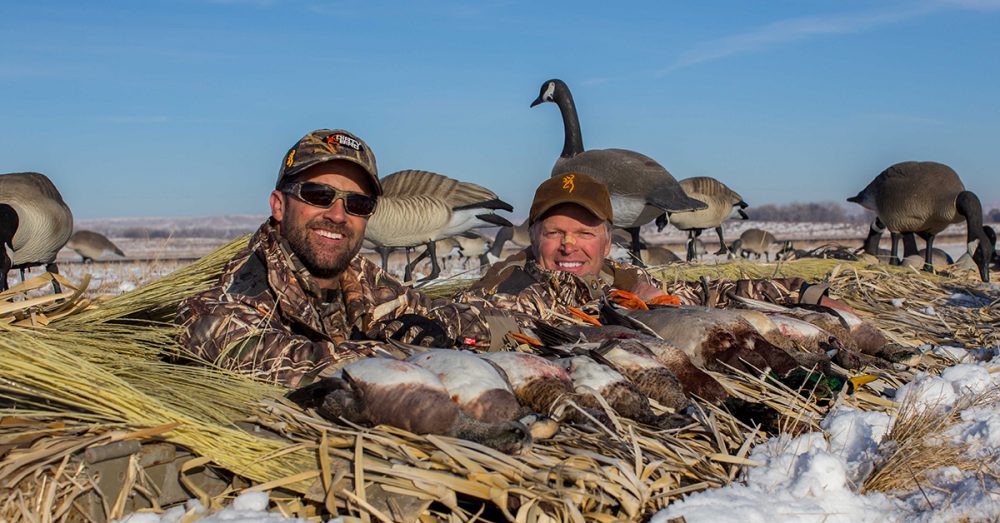Waterfowl hunting is one of the most thrilling and rewarding outdoor activities, blending patience, skill, and a deep understanding of nature. Whether you’re a seasoned hunter or just beginning your waterfowl hunting journey, it’s important to approach each hunt with a clear strategy and respect for the environment. As you prepare for your next outing, there are two essential things you should always keep in mind: understanding the behavior of waterfowl and being prepared for unpredictable conditions.
1. Understanding Waterfowl Behavior
One of the most crucial aspects of waterfowl hunting is understanding the behavior of the birds you’re pursuing. Ducks, geese, and other waterfowl have specific patterns and tendencies that can help you determine the best places to set up, when to expect them, and how to present your decoys.
Migration Patterns and Seasons Waterfowl migration is one of the most important factors to consider. Different species of ducks and geese migrate at different times, and their migratory paths can vary depending on weather, food availability, and other environmental factors. In the fall, many species begin migrating south for the winter, and hunters can take advantage of these predictable patterns. Knowing when different species are expected in your area allows you to plan your hunts more effectively.
For instance, Northern Pintails and Mallards tend to arrive early in the season, while Canada Geese may follow later. Understanding these timing nuances will help you adjust your expectations, scout locations in advance, and gear up for a successful hunt.
Feeding Habits and Preferred Habitats Waterfowl have highly specialized feeding habits and preferred habitats that change with the seasons. In the early fall, ducks may be feeding on abundant aquatic vegetation, but as the weather cools and ice forms, their feeding patterns will shift. Understanding where these birds feed, roost, and seek shelter can give you an edge in predicting where they’ll be during your hunt.
For instance, puddle ducks, such as Mallards and Black Ducks, are typically found in shallow, quiet waters like ponds, marshes, and riverbanks where they can forage for seeds and small invertebrates. On the other hand, diving ducks like Canvasbacks and Redheads prefer deeper waters, where they dive for food like aquatic plants and small fish. Setting up your decoys in the right areas according to the type of waterfowl you’re targeting will increase your chances of success.
Dealing with the Wind and Weather Waterfowl are also very sensitive to weather conditions, especially wind. The wind direction can affect how birds fly, where they land, and how they interact with your decoys. A stiff wind can help birds navigate, but it can also make it harder to communicate with other hunters and make accurate shots. In general, a moderate wind is ideal for waterfowl hunting, as it allows for easier decoy placement and often encourages the birds to land.
Cold weather often drives waterfowl to seek warmer, sheltered areas where food is still available. Keep an eye on weather forecasts, as sudden cold fronts or snowstorms can alter the birds’ behavior and migration patterns.
2. Being Prepared for Unpredictable Conditions
Waterfowl hunting isn’t like other forms of hunting. You don’t know for sure where your quarry will be, and conditions can change rapidly. This makes being prepared for unpredictable weather and environmental factors essential for success.
Gear Up for the Elements One thing that sets waterfowl hunting apart is its exposure to the elements. Whether you’re hunting from a blind on a frozen lake or sitting in a shallow marsh, you’ll need to be ready for whatever Mother Nature throws at you. The cold, wind, and wet conditions can be harsh, and it’s important to gear up properly.
Invest in waterproof and insulated clothing, such as waterproof waders, layered clothing, and waterproof gloves to keep your hands warm and functional. A good pair of boots designed for cold and wet conditions is essential for trudging through marshes or standing in shallow water. Having the right gear ensures you’ll stay comfortable and focused on your hunt, not distracted by the elements.
Don’t forget about your blind. If you’re using a layout blind or a stationary blind, ensure it’s well camouflaged and properly set up to blend in with your surroundings. Having a solid, weather-resistant blind ensures that you can stay hidden from the birds while keeping out of the elements.
Scout Locations and Adjust Accordingly Even with the best understanding of waterfowl behavior, your hunt could be affected by conditions outside of your control. This is where scouting comes in. Always arrive early and scout the area for signs of activity, such as feeding zones, roosting sites, and migration patterns. By familiarizing yourself with the land and water, you’ll be better equipped to make adjustments based on the current conditions.
The best locations for waterfowl hunting are often unpredictable—what works one day may not work the next. Birds can move in response to weather patterns, pressure from other hunters, or shifts in the availability of food. Don’t hesitate to move your setup, adjust your decoys, or even relocate entirely if you’re not seeing action.
Dealing with Changing Water Levels In wetland areas, water levels can fluctuate drastically due to seasonal rains, irrigation, or unexpected storms. A location that’s productive one day might be flooded or dry the next, forcing waterfowl to move on to more favorable areas. Carrying a portable blind or a decoy spread that can be easily adjusted is crucial in these situations. It’s also a good idea to have several spots planned out in case you need to adapt to changing water conditions.
Conclusion
Waterfowl hunting is both a challenging and rewarding experience. By understanding the behavior of waterfowl and preparing for unpredictable conditions, hunters can maximize their chances of success. The key is to be adaptable and always have a plan—whether it’s adjusting your decoy spread based on weather patterns or choosing the right time and place to hunt.
Remember that preparation isn’t just about having the right gear or location; it’s about understanding the rhythm of nature and the needs of the birds you’re pursuing. So, the next time you hit the marsh, keep these two things in mind: study waterfowl behavior and stay prepared for whatever nature throws your way. Happy hunting!


